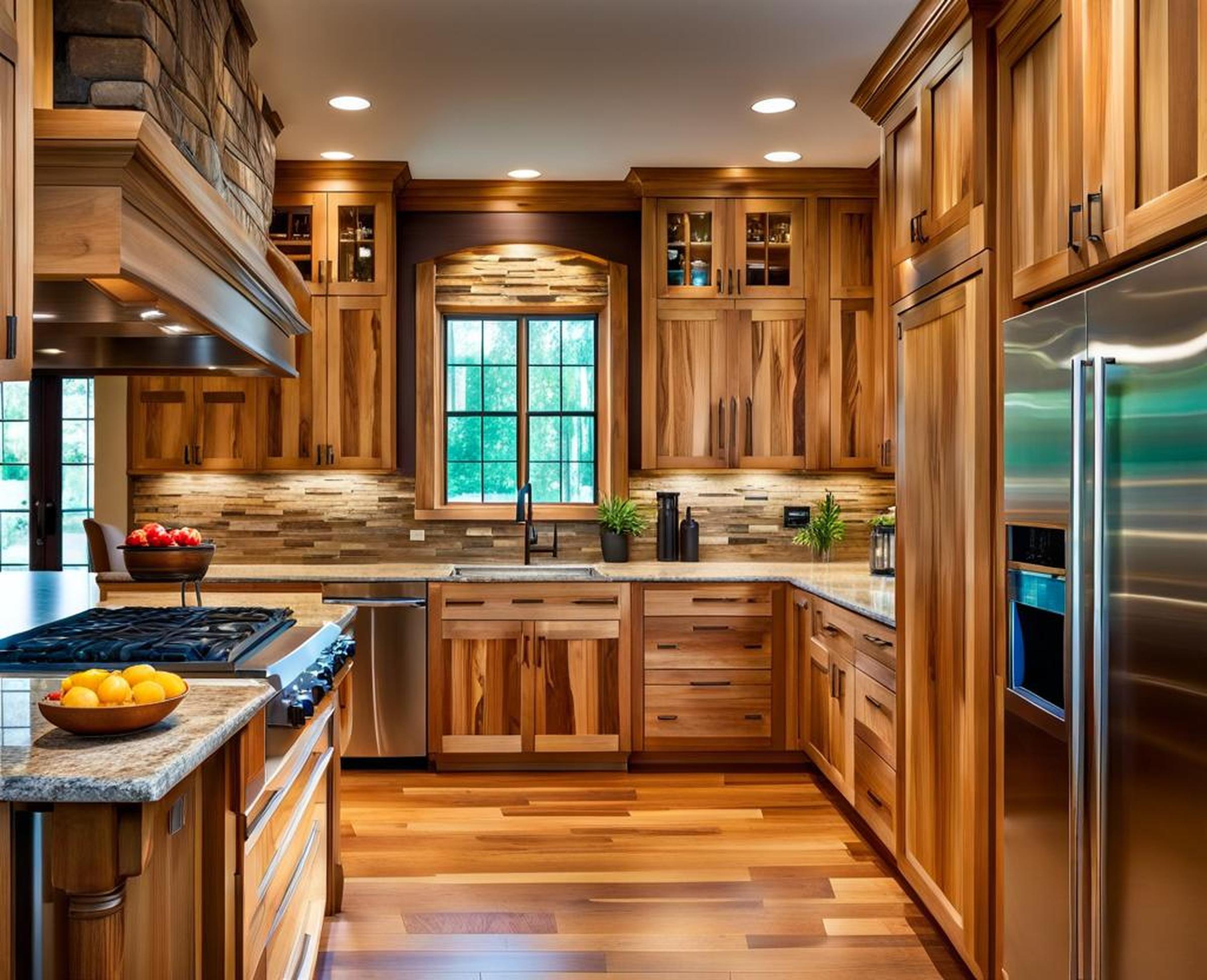The warm, natural tones of hickory wood make it a great choice for kitchen cabinets. The rich vibe and artisanal look of hickory bring a refined yet welcoming spirit into the heart of a home.
Hickory Wood Qualities
Hickory is a strong, heavy wood sourced from sustainably harvested North American trees. It has a tight grain structure ranging in color from light blonde to deeper reddish brown. Hickory is prized for its durability and moisture-resistance, making it an ideal wood for kitchen cabinets.
Another advantage of hickory is its ability to absorb sound. The dense wood helps minimize kitchen clatter and noise.
Benefits of Hickory Cabinets
Quality construction and joinery are key when using hickory for cabinets. Dovetail joints ensure the boxes and drawers will withstand years of regular use.
Other benefits include:

- Long-lasting durability from quality construction
- Range of finish options from light to dark stains
- Can be easily repaired by sanding and refinishing
- Eco-friendly material with little waste
Proper care is required to maintain hickory cabinets in peak condition. Immediately drying moisture and cleaning spills preserves the wood’s beauty.
Achieving a Traditional Look
Hickory cabinets lend themselves perfectly to traditional kitchen elements. Glass-front cabinets elegantly showcase dish collections while providing closed storage. Arched detailing on uppers imparts a built-in look popular in older homes.
| Traditional Styling Choices | Benefits |
|---|---|
| Inset cabinet doors | Seamless, sleek facade |
| Sturdy hardware | Brushed nickel or oil-rubbed bronze |
| Glass-front cabinets | Display collections while hiding clutter |
| Subway tile backsplash | Classic look, easy maintenance |
Pairing Countertops and Backsplashes
Choosing complementary materials for countertops and backsplashes completes the traditional vibe.
Elegant natural stone surfaces like granite, soapstone, or marble allow the hickory cabinets to take center stage. Avoid busy patterns on counters that compete with the wood grain. Pair with neutral creams or grays for a sophisticated look.
For the backsplash, classic white subway tile is a safe bet. Or make a statement with an intricate mosaic design full of Old World charm. Keep colors muted so as not to distract from the hickory cabinets.
Complementary Color Schemes
When selecting wall colors, it’s best to let the beauty of the hickory wood shine. Soothing, neutral palettes in beige, gray, or cream make the perfect backdrop. For contrast, bright white paint can elegantly elevate the wood’s rich tones.
Pops of color in the accessories provide visual interest while keeping the palette understated. Blue, green, and terracotta work nicely as accents. Avoid competing wood tones in floors or walls that will clash with the hickory cabinets.
Modern and Rustic Twists
While hickory excels in traditional kitchens, the versatile wood can also take on a modern or rustic edge. The natural texture pairs well with industrial elements like concrete counters, exposed ductwork, and stainless steel appliances.
For country charm, open shelving flanking a farmhouse sink highlights handmade craftsmanship. Glass doors in a bright accent color add a cheerful pop of visual interest.
Maximizing Small Kitchen Spaces
Even small kitchens can benefit from hickory’s warmth. Glass-front upper cabinets keep everything visible while taking up minimal space. Shelves and pull-out storage increase access. Using hickory only on the island is one way to enjoy the look on a budget.
Bright white paint colors help reflect light in tight quarters. Include lighting under cabinets to banish dark corners and highlight work zones.
With its refined yet relaxed aesthetic, hickory cabinetry brings heritage home. The wood’s elegance harmonizes beautifully with traditional kitchen elements. Yet hickory also embraces modern and rustic sensibilities. Its timeless appeal will sustain for decades to come.
For homeowners seeking lasting style, quality, and craftsmanship, hickory is the key to a kitchen with timeless warmth and character.
